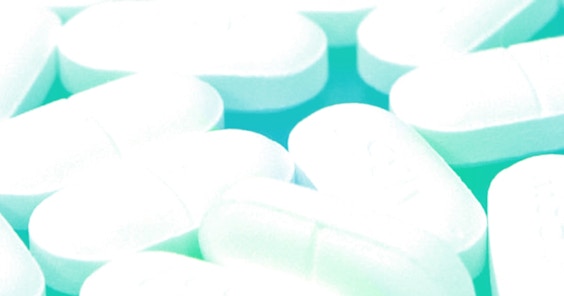I Am Sober is a free app that helps you get some control back in your life.

What is Fentanyl?
Last Updated: Fri, January 19, 2024We have written about several drugs on the I Am Sober App website, but fentanyl is arguably one of the most dangerous. Fentanyl is an extremely powerful synthetic opioid. Opioids are drugs used for moderate to severe pain and work by binding to opioid receptors in the brain and spinal cord. When the drug binds to these receptors, the receptors are unable to send out pain signals, which means that the body does not feel any pain. Those who take opioids experience feelings of euphoria, relaxation, and contentment. Fentanyl in particular is typically prescribed only to those with severe pain, such as cancer patients and those with back injuries, major traumas, and nerve damage.
Why is fentanyl so dangerous?
If you look at any news article about fentanyl, it will tell you that this drug is extremely dangerous. But why? Fentanyl is both dangerous and addictive due to its potency. While there are many different types of opioids, fentanyl is by far one of the most powerful. It is 80-100 times more powerful than morphine and 50 times more powerful than heroin. Fentanyl is so strong that just .25 milligrams could be deadly. The stronger the drug, the more addictive it is.
Is fentanyl addictive?
Yes, fentanyl is absolutely addictive. Because fentanyl is such a potent drug, it has the potential to be highly addictive. However, not everyone who uses fentanyl will become addicted. With that being said, it’s always better to be safe than sorry. If fentanyl is needed for pain, you can also request that your doctor only prescribes non-addictive medication that can get the job done without being dangerous.
What are the side effects of fentanyl?
Fentanyl has a long list of side-effects. However, keep in mind that not everyone who uses fentanyl will experience all of these side effects. Everyone experiences fentanyl differently based on a variety of factors that we will discuss later. Here are the most common fentanyl side effects:
-
Nausea
-
Constipation
-
Diarrhea
-
Confusion
-
Weakness
-
Reduced appetite
-
Flatulence
-
Slurred speech
-
Lack of balance
-
Slowed pulse
-
Headache
-
Rash
What is a typical dosage / how much is an overdose?
There is no one standard dosage of fentanyl that works for everyone. The amount of fentanyl needed depends on a person’s weight, health, tolerance, and the amount and form of the drug taken. The same goes for fentanyl overdoses. Essentially, the amount that one person may experience an overdose with may not cause an overdose in someone else. With that being said, the general dose of fentanyl recommended to soothe pain in an adult is between 50-100 mcg. Note that this measurement is in micrograms, rather than milligrams. On average, an adult should only take between .05 and .1 mg of fentanyl.
The risk of accidental overdose with fentanyl is quite high. This can occur if fentanyl was taken alone, although it is oftentimes mixed with other medications if illicit. According to the DEA, a dose as small as 2-3 mg can be deadly.
What is the fentanyl patch?
The most common ways to ingest fentanyl are by lozenge or by injection. However, the fentanyl patch is slowly becoming a more popular way to use fentanyl. The fentanyl transdermal patch is a patch applied to the skin that holds enough of the drug for 72 hours and is available in different doses. Fentanyl patches are typically prescribed after a surgery or for those who suffer from chronic pain when there will be pain in a particular area. These patches work because the drug contained on the patch seeps through the skin and into the bloodstream. However, it does take some time for the medication to reach the bloodstream- typically up to 24 hours.
When prescribed by a doctor, you will likely be given a fentanyl patch of a low dose and advised to wear it for no more than three days. He may then increase the dose or the length of time to wear the patch. Fentanyl patches are waterproof, so they can be worn while bathing or swimming. The best places on the body to apply these patches are the chest, back, upper arms, and sides. It’s important that these patches aren’t applied on sensitive, cut, or oily skin.
How do I know if someone took fentanyl?
Fentanyl is slowly becoming one of the most abused drugs in the United States. According to the CDC, there was a 79% increase in fentanyl-related deaths between 2013 and 2014 alone. It’s rarely difficult to tell whether someone is high on drugs. However, it can be difficult to tell exactly which drug they took. There are a few specific symptoms to look for if you believe that someone may have taken fentanyl. Here are some of the signs that someone may have taken this drug:
-
Burst of euphoria followed by depression and confusion
-
Slowed heart rate
-
Trouble walking
-
Muscle stiffness
-
Pupils the size of a pin tip
-
Swollen limbs
There are more ways to tell if someone has taken fentanyl, but they are quite similar the side effects of other drugs. While it can be helpful to know which drug someone consumed, remember that it isn’t necessary. If someone you know has consumed any drugs and at all and is experiencing side effects, the most important thing is that you get them help. Drugs like fentanyl are highly addictive and oftentimes those who become addicted are unable to get clean without professional help.
Will it show up on a drug test?
As with most drugs, fentanyl will appear on a drug test. However, the length of time it’s been since you took fentanyl, the form of fentanyl used, and the type of drug test will determine whether the results will show positive or negative. For example, the half-life of fentanyl taken through a transdermal patch or tablet is much longer than the half-life of fentanyl taken intravenously. The half-life determines the length of time until half of the drug is out of your system. In general, fentanyl can be identified through: a urine test between 8-24 hours after use, a blood test up to 12 hours after use, saliva 1-4 days after use, and hair up to 90 days after use.
Fentanyl is one of the most dangerous drugs on the market today. Fentanyl-related deaths have increased drastically in recent years due to the drug’s potency and popularity. While it is prescribed by doctors in some cases, this is done with extreme caution because of how addictive fentanyl can be. Few people can use fentanyl without becoming addicted. If you or someone that you know is addicted to fentanyl, please reach out before it’s too late. There are many resources- both in-person and online- that can help you get clean, including the I Am Sober App. Addiction is a monster, but it’s not something that you have to fight off on your own.
I Am Sober is a free app that helps you get some control back in your life.




